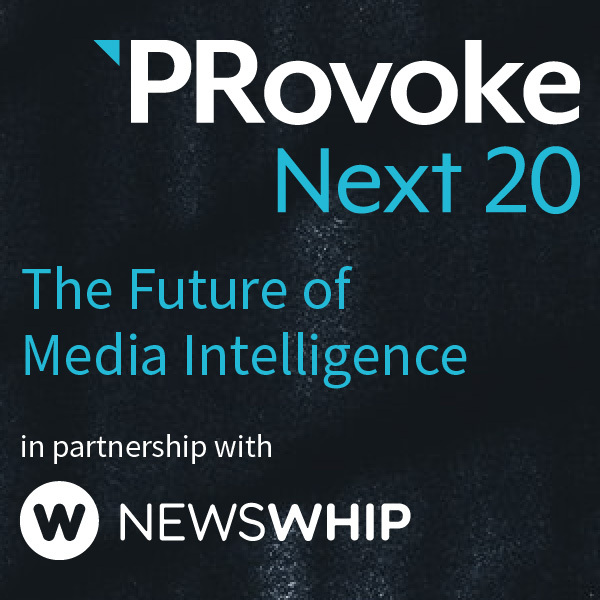NewsWhip 02 Mar 2020 // 7:29PM GMT

By Paul Quigley
Who is the most influential writer on blockchain? Or, if they’re not available, which writer is most undervalued in blockchain - someone with great influence, but not at a classic Tier 1 publisher? If you pitch a blockchain story, which angles or narratives are most likely to get a response?
Traditionally in PR, we answered those questions through our specialist knowledge – and built media plans from our contacts, our creativity, and our knowledge. But as the media environment has become more complex, splintered, and distribution pipes now depend on people sharing and engaging socially – PR professionals will increasingly supplement their knowledge and creative processes with hard data.
In a 12-part series with PRovoke Media over 2020, NewsWhip will explore various topics to give a taste of how data can answer questions on influence, reach, and narrative, often in unexpected ways.
To begin, we wanted to consider the data around earned media strategy in one of the most topical industry segments today: technology.
Earned media can be life and death for new technology companies - whether you are a business software company positioning your thought leadership in a competitive space, or a rideshare startup trying to win positive press ahead of a regulatory hearing.
Data on content engagement can help reveal which angles on thought leadership might work best, or whether that scooter story is going to blow up, badly. Data can also reveal other big trends in the technology content space, which we’re going to look at today.
Before kicking off: here are some questions to ponder:
1. Would you expect more public engagement on technology stories on mainstream publishers, or on technology stories from dedicated technology publishers?
2. Are there any themes or commonalities in the types of technology stories that get engagement?
3. Do more specialist publishers win out in more niche technology topics?
4. What themes dominate the most positive and negative stories about Big Tech?
Tech Publishers and Mainstream Publishers
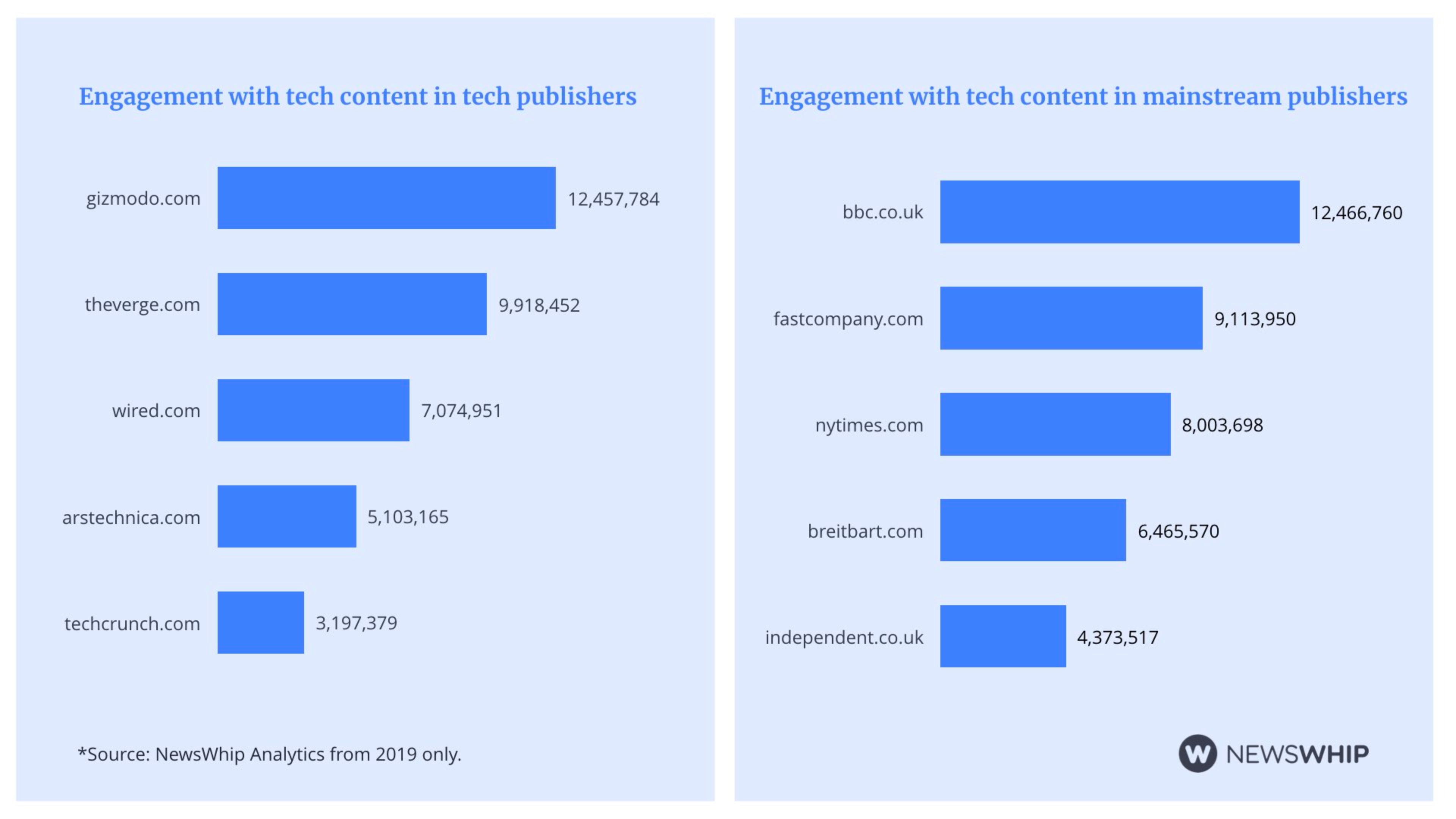
First off - if you’re looking at the best home for a tech story - are you better going to the dedicated technology press, or to the technology section of a mainstream publisher?
One way of answering that question is to look at overall engagement with each. As the above graph shows, a surprisingly similar power law holds for engagement with technology content from the top five in each group. Both ran from about 12 million engagements (number 1), about 9 million (number 2), and 7-8 million (for the third place). So the “tech” vertical at the NYT, as the world’s third most engaged tech vertical, is about the same size, in terms of social engagement, as it is for the world’s third most engaged dedicated tech publisher, Wired.
For context, on average, the five biggest publishers in the world receive roughly 400 million engagements per year. Tech is a strong vertical - but as you’ll expect, dwarfed by politics and general news.
While the most shared tech publishers might not surprise you - the most shared technology sections of mainstream publishers might - there’s Breitbart, just behind the New York Times. This may reflect the fact that today, technology is political.
The political and technology intersect on the topic of climate. The single most shared post from any technology publisher was from Gizmodo’s environmental “Earther” vertical - with almost a million engagements on an article about a landmark climate lawsuit. The top true “Tech” story was about Igloo releasing a biodegradable cooler for just ten dollars, receiving some 393,000 engagements.
On mainstream publishers covering tech, political and human concerns about tech also reigned supreme. The biggest article of the year, with some 1.4 million engagements, was a Forbes piece that examined the rise of the viral FaceApp that allowed users to modify their facial features by age and other filters. The article explored whether or not the company now owned personal data on its 150 million plus users.
The privacy angle continued, with a number of the most engaged articles focusing on how big companies treat privacy as an issue.
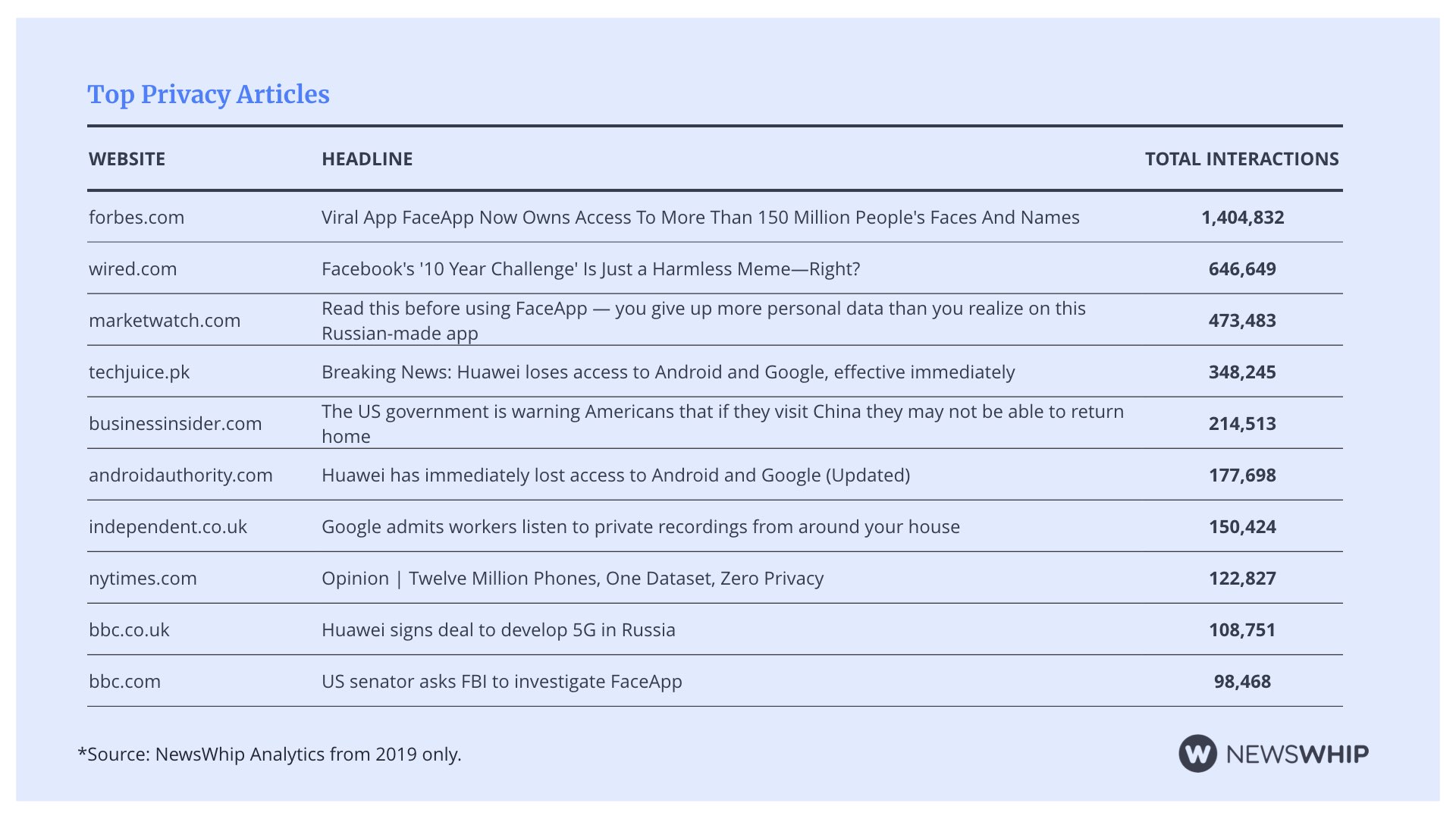
So, there are ultimately two choices here for earned media in tech in broad terms. The tech publishers write a lot more stories, of course, but they tend to get lower engagement than the mainstream on a story level. That said, it is often dependent on the topic being covered, so when we look broadly at tech it is a toss-up, but when we get into more niche topics, there might be obvious standout publishers to approach.
Technology Niche Topics
We searched some more niche B2B tech topics such as 5G, AI, blockchain, machine learning, and cloud computing to see where engagement with stories happens – at niche publishers or in the mainstream. When you dive more deeply into these topics, some new patterns can emerge.
For example, diving into the most engaged blockchain publishers you’ll start to see unfamiliar names: such as Coin Telegraph, Coindesk, and Libra.
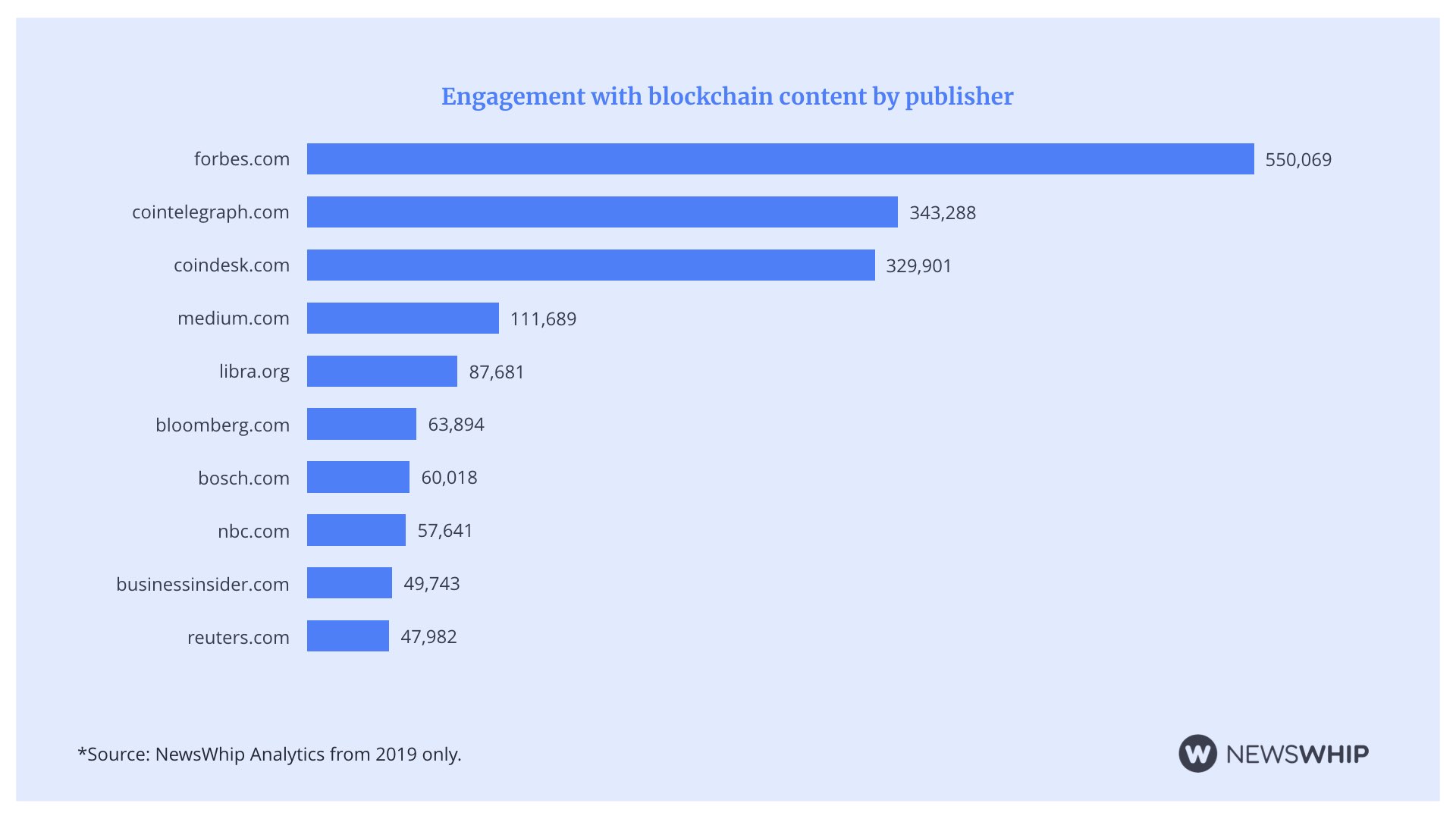
Also: Bosch! In a remarkable owned media win, Bosch’s company blog was seventh most engaged publisher on Blockchain in 2019, ahead of Reuters, NBC and Business Insider. This came down to two successful articles on the subject, one explaining blockchain, and one explaining how cars might negotiate with charging stations, and these combined to the tune of 60,000 engagements. (The data does not reveal whether these stories received only organic engagement or benefited from a paid boost.)
Big Tech Coverage
The largest tech companies have become journalism beats in themselves, particularly FAANG - Facebook, Apple, Amazon, Netflix, and Google. The publishers winning the most audience with stories about these companies were generally among the biggest publishers in the world: NBC, CNN, Fox News, Huff Post and The Independent.
Many of the top articles were generally framed more positively than you might expect, given the barrage of criticism that these companies often elicit. Areas of positivity circled round the quotidian and the human: for Amazon, a delivery driver reacting to snacks being left out by a homeowner, and a birthday cake shaped like an Amazon Prime box. For Facebook: the groups used by UPS drivers to share pictures of the dogs they met on their route.
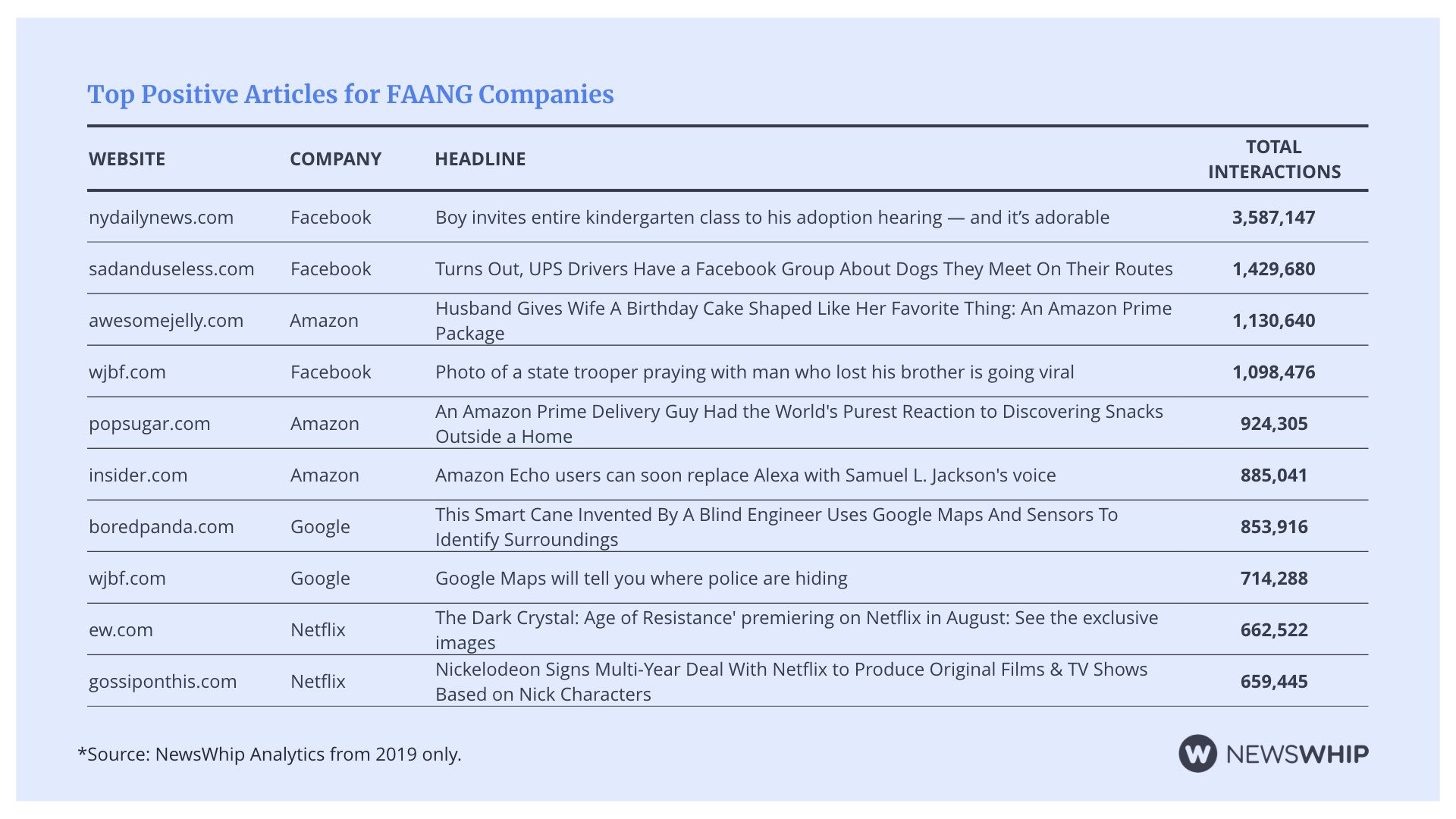
There was plenty of criticism of these companies too, the biggest of these regarding Amazon’s tax situation, with an article in Fortune winning 900,000 engagements – perhaps due to its incendiary headline – below.
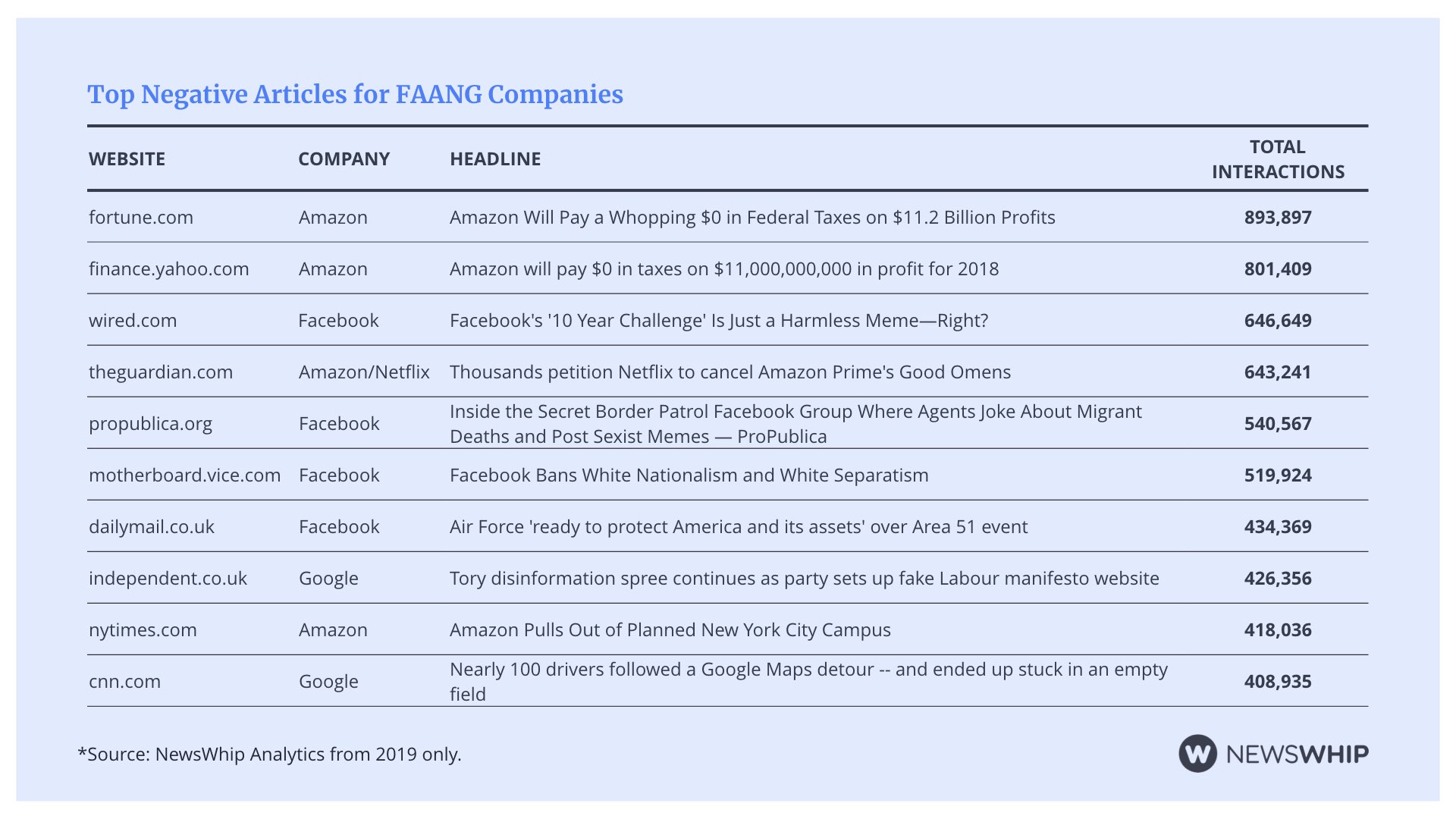
Privacy emerged as another common theme in the top ten stories and beyond, with engagement perhaps reflecting public anxiety. Content and behavior on Facebook is another recurring theme, as the company wrestles with the problems of linking and giving platforms to 2 billion individuals.
Advising an individual client technology company on this landscape involves digging into these meta narratives. These appear to include the scale and dimensions of public anxiety about technology, the joy of human “wins” powered by technology, and the challenges of bringing these to bear on individual company’s needs.
Perennial human preoccupations like fairness, love, and relationships loom large in the most engaged tech stories. When devising any content and earned media strategy – there appears to be an iron law – let’s call it the Moore’s Law for of Tech Storytelling – to relate your story to core human benefits.
As always – the NewsWhip Research Center is available to go deeper on your questions about Tech – or any topic discussed in this series. Drop us a line. See you next month.
Paul Quigley is co-founder and CEO of NewsWhip. PRovoke Media partnered with NewsWhip on a multi-part series that explores the intersection of PR and predictive analytics. The series can be accessed here.


































.jpg)


.png)
